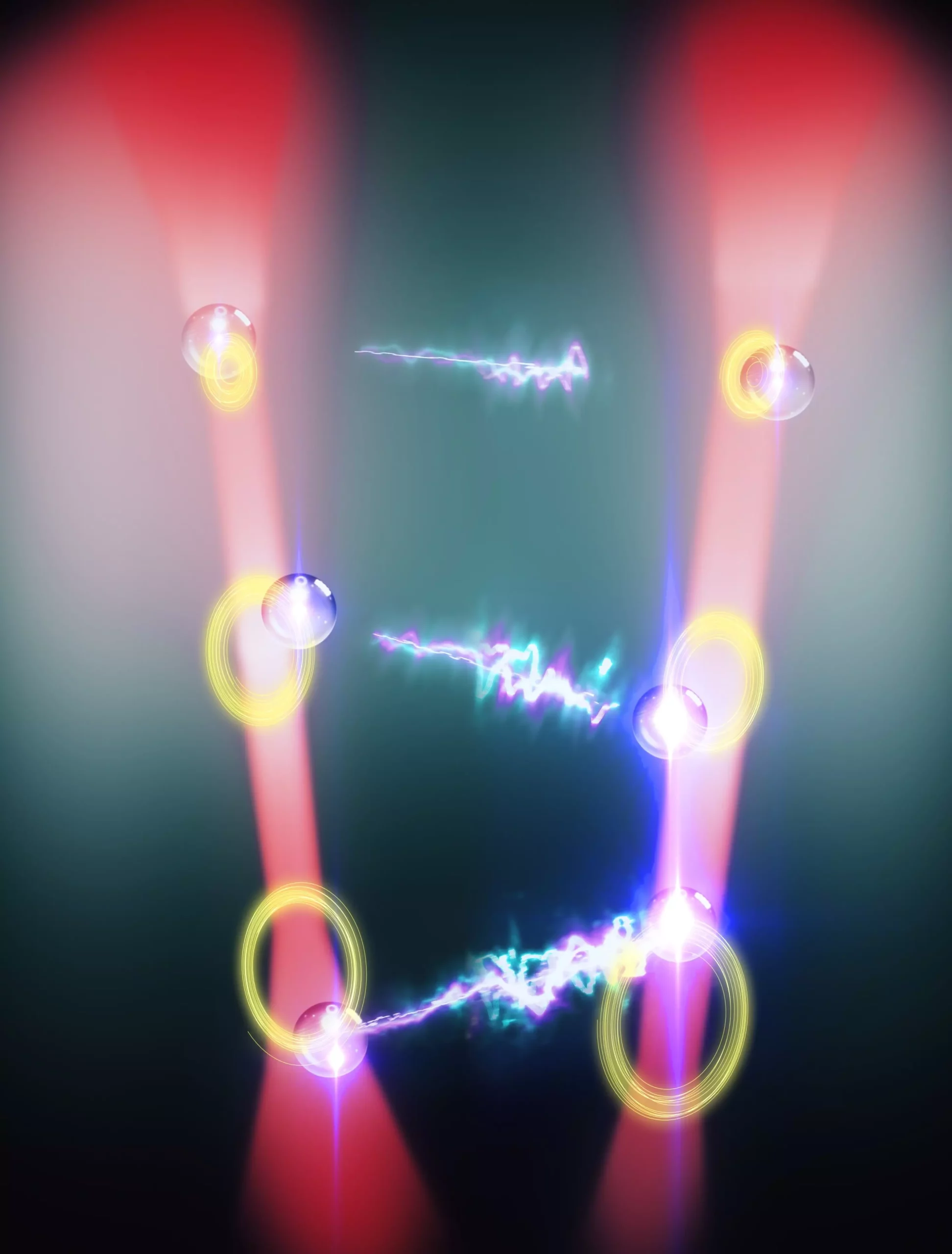In a groundbreaking achievement that merges the realms of quantum mechanics and practical applications, researchers have unveiled a significant development in the study of optical interactions with nanoparticles. This exploration goes beyond conventional physics by investigating non-reciprocal interactions — a concept that reflects the complexity of real-world dynamics. Traditional forces tend to conform to the established rules of reciprocity; however, nature frequently contradicts this norm. The implications of these non-Hermitian dynamics, as observed with optically trapped glass nanoparticles, could redefine various fields ranging from quantum physics to advanced sensing technologies.
Understanding Non-Hermitian Dynamics
At the heart of non-Hermitian dynamics lies the challenge of systems where standard reciprocal interactions are absent. Typically, one might assume that forces either attract or repel; yet, there are scenarios, such as predator-prey relationships, where the dynamics are far more complicated. By harnessing optical tweezers, a technique recognized by 2018 Nobel Laureate Arthur Ashkin, a team from the University of Vienna has successfully demonstrated these complexities. Their work, published in Nature Physics, shows how the interactions among particles can lead to non-linear and non-Hermitian dynamics, which take center stage in understanding contemporary quantum systems.
The ability to manipulate these interactions in a controlled environment is revolutionary. Through the precise adjustment of light phases and distances between the particles, researchers have managed to create a feedback mechanism reminiscent of a predator chasing its prey. The juxtaposition of constructive and destructive interference illuminates the innovative control the team wields over their experimental setup.
Exploration Through Experimentation: A Quantum Playground
The experimental design crafted by Uroš Delič and his colleagues has transformed a tabletop into a playground for uncovering non-linear dynamics. Glass nanoparticles, suspended in distinct optical tweezers, are guided through a meticulously controlled environment, where their movements can be adjusted and fine-tuned through computational programming — not unlike the dynamics of a video game. This simplistic interface allows researchers to engage with complex interactions intuitively, showcasing how elegantly simple technological advances can pave the way for profound scientific inquiry.
Upon manipulating the parameters of their experiment, the researchers observed an extraordinary phenomenon: particles exhibited behavior akin to swings, oscillating in harmony under their anti-reciprocal influence. Such self-reinforced movements suggest a more intricate reality than traditionally understood, where one small movement instigates enhanced reactions from the counterpart. This study represents a leap toward understanding dynamic systems that break the established norms of symmetry, leading to compelling observations about the robustness of quantum systems.
Innovative Implications and Future Applications
What makes this work particularly compelling is its potential for real-world applications. By exploiting non-reciprocal forces, which mirror many natural occurrences, the study sets the stage for employing these dynamics in force and torque sensing. The researchers, including theorist Benjamin Stickler from Ulm University, underscore the importance of their findings, which may offer pathways to enhance current sensing technologies and probe deeper into quantum dynamics.
The successful observation of limit cycles — where particles maintain stable oscillations while influencing each other’s movements — is a quintessential example of how combining theoretical frameworks and experimental practices can yield unexpected results. This relationship not only highlights the parallels between different scientific approaches but also emphasizes the accessibility of previously esoteric concepts to practical experimentation.
As the researchers hint at the prospects of expanding their methodologies to entrap larger ensembles of nanoparticles, the field stands on the brink of unlocking new collective non-reciprocal dynamics. The convergence of these observations with quantum mechanics could herald a transformative era in studying few-body quantum systems, enabling enhanced exploration of complex quantum states and interactions.
A Paradigm Shift in Optical Manipulation
Ultimately, the exploration of optically-trapped glass nanoparticles and their non-Hermitian dynamics represents a significant paradigm shift in the manipulation of light and matter. In revealing the subtleties of non-reciprocal interactions, this research transcends traditional boundaries and opens avenues for innovative applications across various scientific disciplines. As researchers delve deeper into these novel dynamics, we can anticipate valuable insights that could revolutionize how we think about interactions at the quantum level, fundamentally altering our understanding of both classical and quantum physics. This study not only reinforces the power of interdisciplinary collaboration but also highlights the unmatched potential that arises when empirical creativity meets theoretical rigor in the quest for knowledge.

